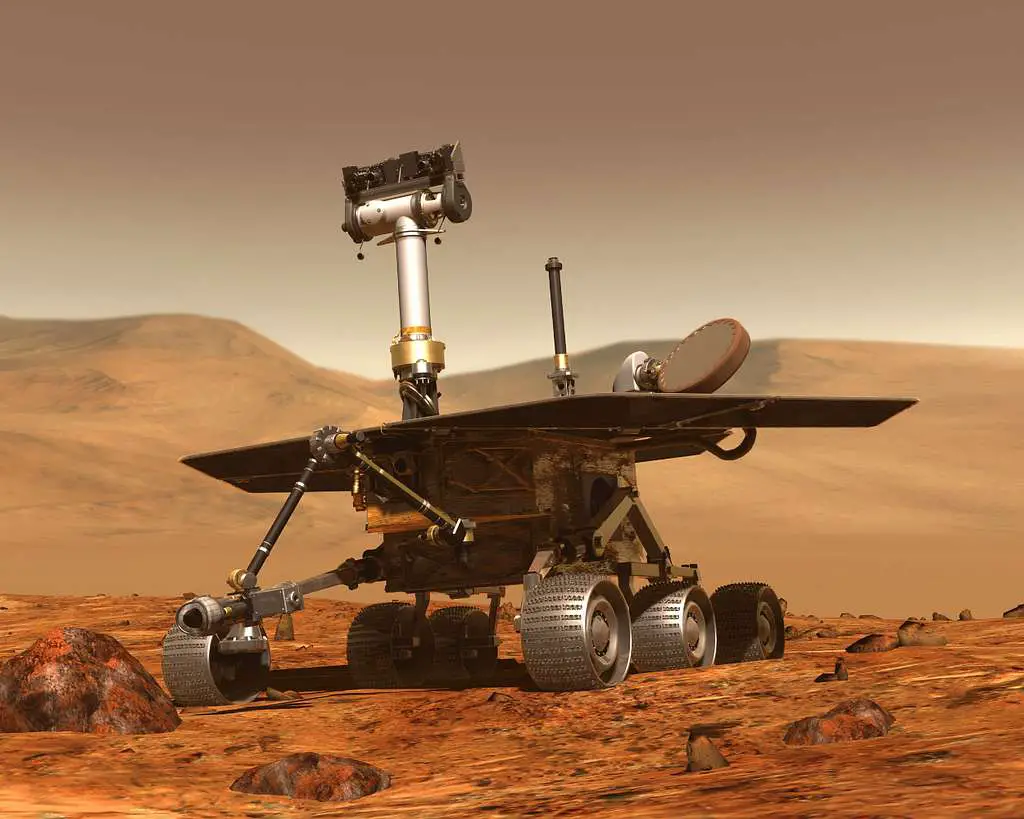With the most recent findings made by NASA’s Perseverance rover, the investigation into the mysteries surrounding our neighboring planet, Mars, has entered an exciting new phase. Since its historic landing on Mars’ Jezero Crater in February 2021, the Perseverance rover has been relentlessly investigating the Martian terrain, looking for signs of life in the planet’s past and uncovering clues about the history of the geological processes that occurred on Mars. Recent photographs taken by the rover’s Mastcam-Z camera shed light on the presence of a swift and extensive river system that previously ran over the surface of Mars.
The newly released photographs by NASA highlight a fan-shaped pile of sedimentary rock that towers at an amazing 820 feet in height, which stunned the scientific community when it was revealed. These curved patterns may be seen in the rock strata, which clearly indicates the presence of a powerful river in the area. According to the inferences that may be drawn from these formations, the river’s depth and speed are far greater than anything that researchers had previously envisioned for ancient water basins on Mars.
These interesting bands of layered rock have become the focus of intensive inquiry and conjecture among planetary scientists, who have given them the name “the curvilinear unit” (which means “the curvilinear unit”). The delicate layers of curved silt that were discovered inside the Jezero Crater provide evidence of a water body that was likely much taller in the past but has been degraded greatly over the course of time as a result of the unrelenting effects of the Martian wind. The environment has been reshaped by the action of erosion, which has resulted in the construction of a stunning display of undulating rock formations.
One of the mosaics that was captured by the Mastcam-Z aboard the Perseverance shows a different place around a quarter mile away from Skrinkle Haven. This location likewise displays these curved strata. The discovery of these kinds of patterns in a variety of locations has further piqued the curiosity of scientists, prompting them to look more deeply into the riddle of how these formations came into existence and what kind of water flow could have been responsible for their construction.
The Mastcam-Z equipment on the rover also contributed significantly to our understanding of the composition of the Martian sediment. Detailed images of the region revealed coarse silt grains and cobbles, which helped shed insight on the geological processes that occurred in the past on the Red Planet. In the process of methodically analyzing these discoveries, scientists are hoping to extract useful information about the environment that existed on Mars in the past and the planet’s potential for harboring microbial life.
The investigation of astrobiology was the major goal of the Perseverance mission; therefore, the finding of this ancient river system was of the utmost importance. The rover’s mission is to look for signs of ancient microbial life by analyzing the geological features and evidence of flowing water on the surface of the planet. If such discoveries were made, our concept of the possibilities of life beyond Earth would undergo a fundamental shift, and new doors would be opened for further investigation.
In addition to its emphasis on astrobiology, the mission of the Perseverance rover covers an in-depth investigation of Mars’ geology as well as the planet’s previous climate. The equipment on the rover are able to do in-depth examinations of the Martian rocks and soil, which can provide essential information about the ecosystems that existed on Mars in the past and the planet’s potential habitability.
In addition, the information that was obtained by the Perseverance rover is very important for the preparation of future human exploration of Mars. When it comes to organizing safe and successful manned missions to Mars in the next decades, having a solid understanding of the planet’s surface, geology, and available resources will be absolutely necessary.
As the rover Perseverance continues its mission on the surface of Mars, the scientific community excitedly anticipates additional ground-breaking discoveries that will enhance our understanding of the ancient history of the Red Planet. The rover will pave the path for future expeditions by solving the riddles of its once-thriving river systems. This will ignite the collective human curiosity to explore the cosmos and seek out the answers to the age-old question: Are we alone in the universe?
![]()
